012: Menú del Día: The Secret to Never Going Hungry on the Camino de Santiago
Plan your walk around it. Savor it. Nap afterward. Repeat tomorrow.
If you’re someone who likes lunch at noon and dinner at 6pm, I’ve got news for you: you may starve here in Spain.
Okay—maybe “starving” is a little extreme. But you’ll be one of those pilgrims who wonders why you can never get anything to eat in this country.
There are a few things that you need to know that will keep you well satiated, but today I’m only going to talk about the most important one.
1. Three little words, one big concept: menú del día.
This is the big meal of the day here in Spain. It’s usually served between 1:30 and 3:30 PM, though you won’t see many locals in the restaurants until 2:30.
It’s a multi-course meal that often includes wine, bread, a first course (maybe a salad or soup), a second course (pork, fish, beef or chicken—rarely any vegetarian option), and dessert or coffee. It will cost 10-15 Euros during the week and 15-22 Euros on the weekends and holidays.
How do you find it? On chalkboards outside restaurants. You’ll see usually 2-3 options each for the first course and second course, the price, and if it includes bread/dessert/drink.
Tip: If you don’t speak Spanish, don’t bother translating the items directly to English. They often don’t make sense. Instead, type the Spanish phrase into Google and click on “images” to actually see what the dish looks like.
Case in point: there’s a dish here called moros y cristianos. If you translate it directly, it means Moors and Christians. I can assure you: we do not eat Moors, Christians, or anyone else in this country. Want to know what it really is? Do a google image search.
2. Eating Lunch = Embracing the Culture
In the U.S., we eat quickly and expect the check before the last bite is down. In Spain? Meals are meant to be savored — and that includes after the food is gone.
There’s even a word for what happens after the meal: sobremesa. It’s those lingering-at-the-table kind of moments hours. You finish eating, but nobody rushes you out. You talk. You laugh. You digest.
Waitstaff won’t interrupt unless you flag them down — which sometimes takes some effort, because they assume that you’re in no rush.
The waitstaff aren’t looking to “turn over” the tables. They don’t work exclusively for tips — they earn a living wage and have national healthcare. Leaving a Euro per person is fine, but not expected.
So if you wander by a restaurant at 5pm and see people chatting around a table of empty plates and glasses, don’t expect to walk in and get food. They sat down for lunch at 2:30, the kitchen (but not the whole restaurant) closed at 4:30, and they are still there — enjoying their sobremesa.
3. Evenings: the menú del peregrino
In the U.S., we think of dinner as the main event. But in Spain, dinner is often light and much later.
You’ll see “menú del peregrino” signs along some Camino routes. This is similar to the menú del día and is served as early as 7 PM. But this is strictly for the pilgrims as no Spaniard would eat at that hour. That’s why the full menu is not necessarily available at that time, either. Just the options on the menú del peregrino. The food’s often more basic than what you’d get on the menú del día earlier in the day, but certainly sufficient for a hungry pilgrim.
If you do want to eat like a Spaniard in the evening, restaurants are open for dinner at 8pm. Though a little note about that:
When my husband and I moved here four years ago, we’d go out at 8pm and find every table marked “reserved”—but the entire restaurant and terrace were empty.
Turns out, those reservations were for 10 PM or later. Remember earlier when I said “turning tables” is not a thing over here? You couldn’t expect a group of Spaniards to sit down to eat at 8pm because 1) that’s too early and 2) there’s no way they’d finish by 10pm.
We finally asked if we could eat at 8 if we promised to be gone by 10. The staff looked at us like that would be an amazing feat to accomplish. Or maybe it was a look of “Why would you only want to linger over a meal for two hours?” Regardless, they indulged us. We did as promised. And by the time we left, the Spaniards had barely started showing up.
4. On the Camino: Eat Like a Spaniard
When I walk the Camino (12 times and counting), I plan my day around lunch. I make sure I’m done walking in time to sit down for the menú del día.
Sometimes, instead of the menú, I order off what we Americans would call “the menu.” But here in Spain? That’s called la carta.
After that? I find my accommodation, shower, do laundry, take a nap . . . not necessarily in that order—the nap comes first if I had red wine at lunch. 🍷😉
5. A Word About Drinks
Spaniards love to sit out over a drink — but not to get drunk. They have one of the highest daily consumption rates of alcohol in all of the European Union, but one of the lowest alcoholism rates. Drinking is about conversation, not consumption. If I see a tipsy adult stumbling down the street, I assume they’re a foreigner.
Unless they’re 18 and it’s past midnight.
Final Thought:
Eating in Spain isn’t just about food — it’s about rhythm. It’s about sitting down, slowing down, and truly savoring the moment (and the menu). So instead of saying there’s nothing to eat, adjust to the schedule and enjoy a good Spanish lunch.
With love,
Rebecca
Scenes from the Camino
Who I’m Celebrating!
Congratulations to Tim Wesolowski for finishing his walk on the Camino Portugués last week!
Tim attended my class, “Preparing to Walk the Camino de Santiago” and then worked with me 1-on-1 to get all the details in place. As luck would have it, my schedule was such that I was able to surprise him in Santiago de Compostela.
Thank you, Tim, for inviting me to be part of your Camino planning process. I’m so proud of your accomplishment!
Tim will be joining me on Substack Live on Wednesday, July 9, form 11-11:45 AM EST. We’ll be chatting about his pre-Camino concerns, his experience on the Camino Portugués, and his advice for those of you considering doing the walk yourselves.
(*Note: You must have Substack installed on your phone to watch and participate in our live conversation.)
Ready to start planning your Camino?
Rebecca Weston is an American who walked her first Camino in 2012.
She helps people 45 and over plan their own walks on the Camino de Santiago through her business The Camino Calls.
She and her husband live in Spain in a town of 6500 people on the Camino del Norte. She’s walked more than a dozen Caminos, spent many days volunteering along the trail, and if she’s not walking one now, she’s planning the next—and would love nothing more than to help you plan yours, too.


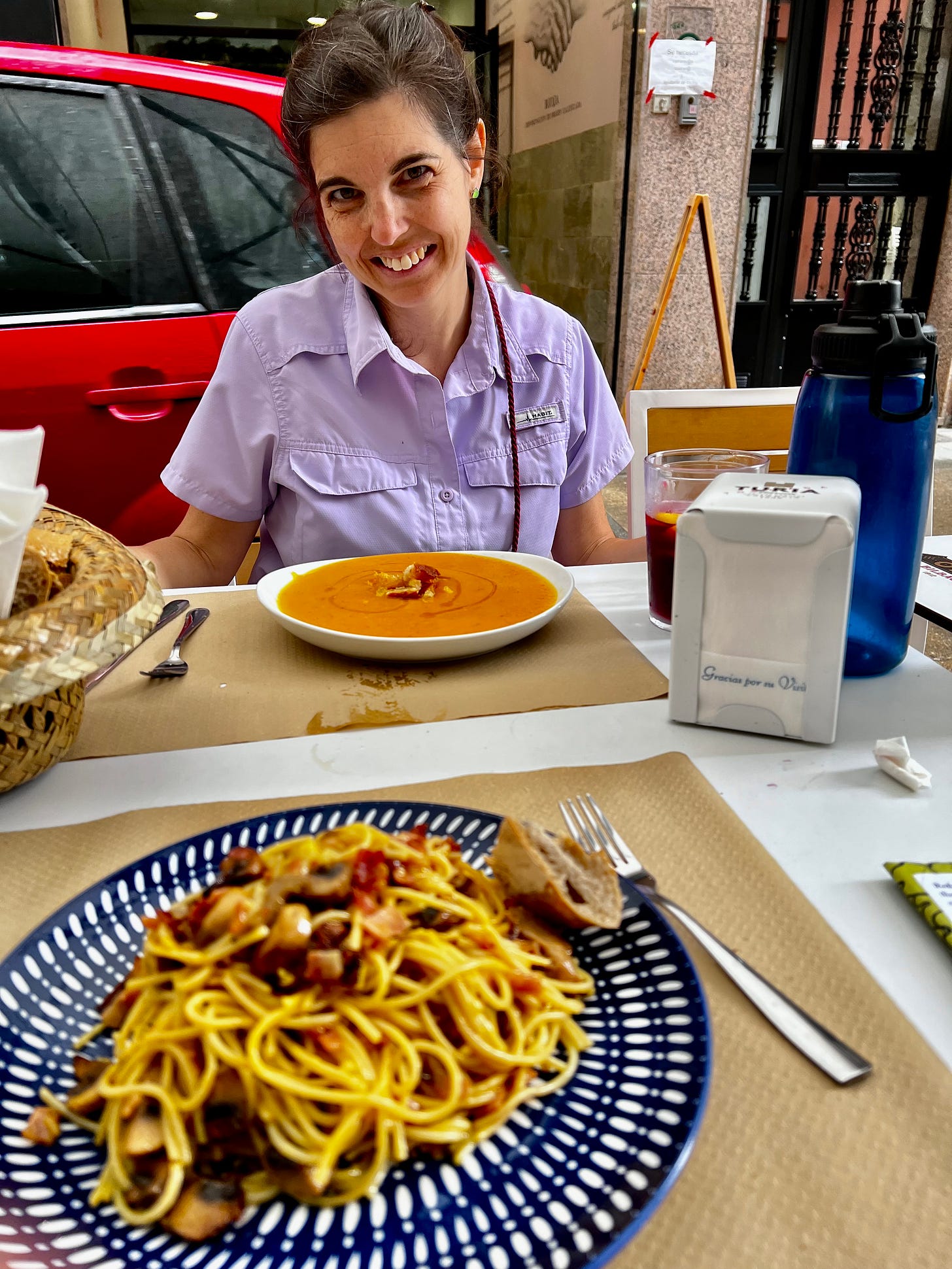
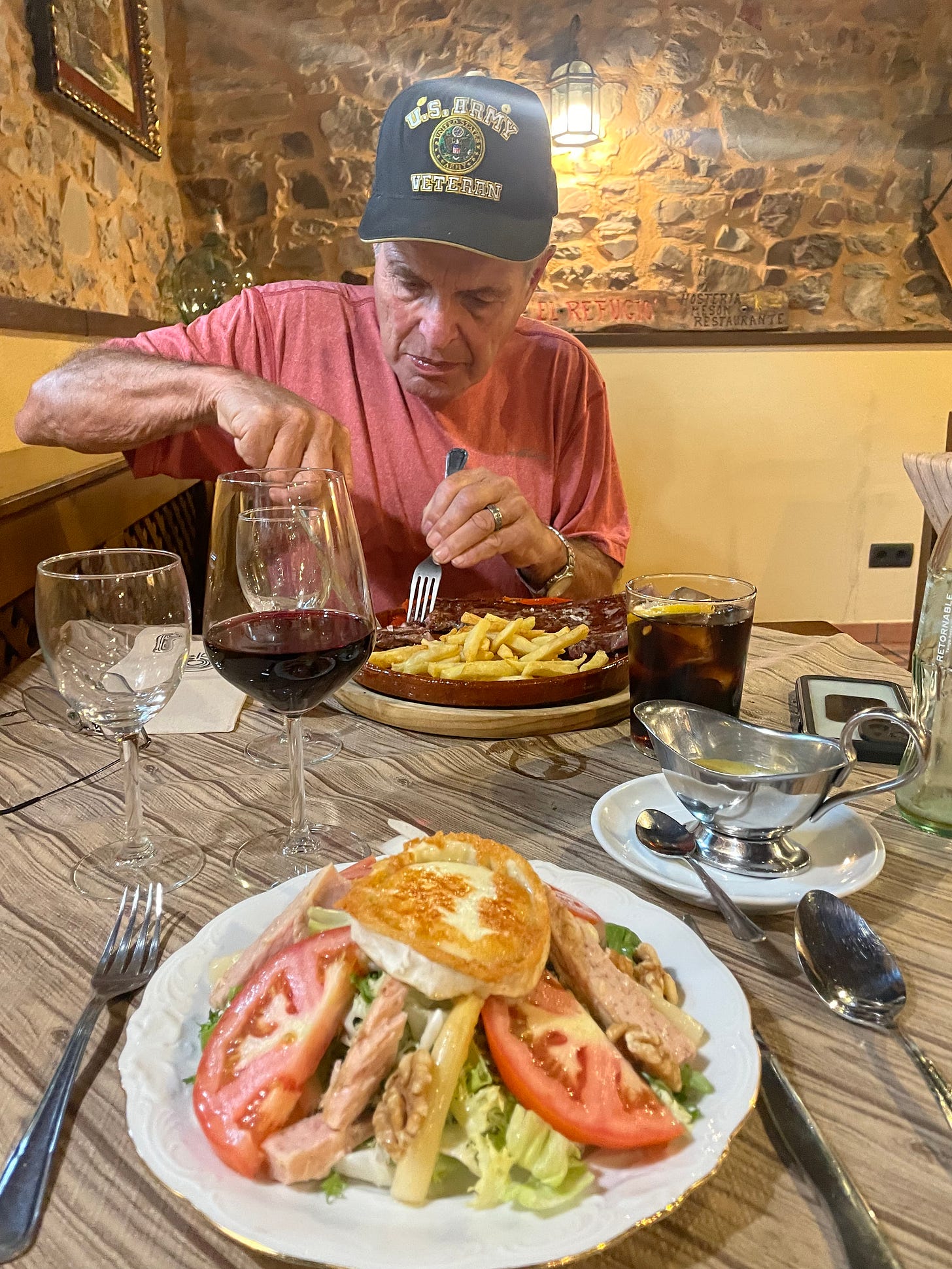
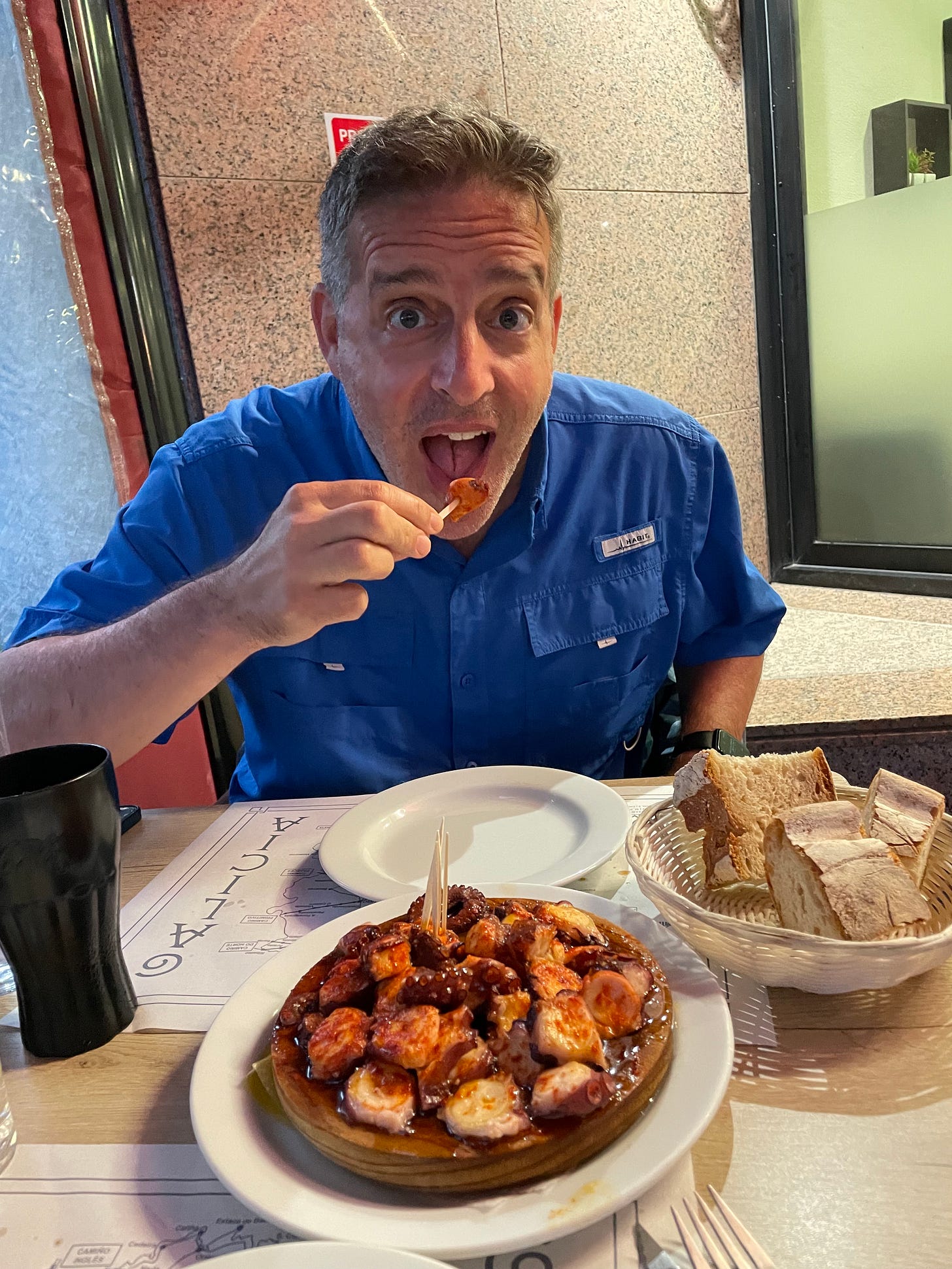
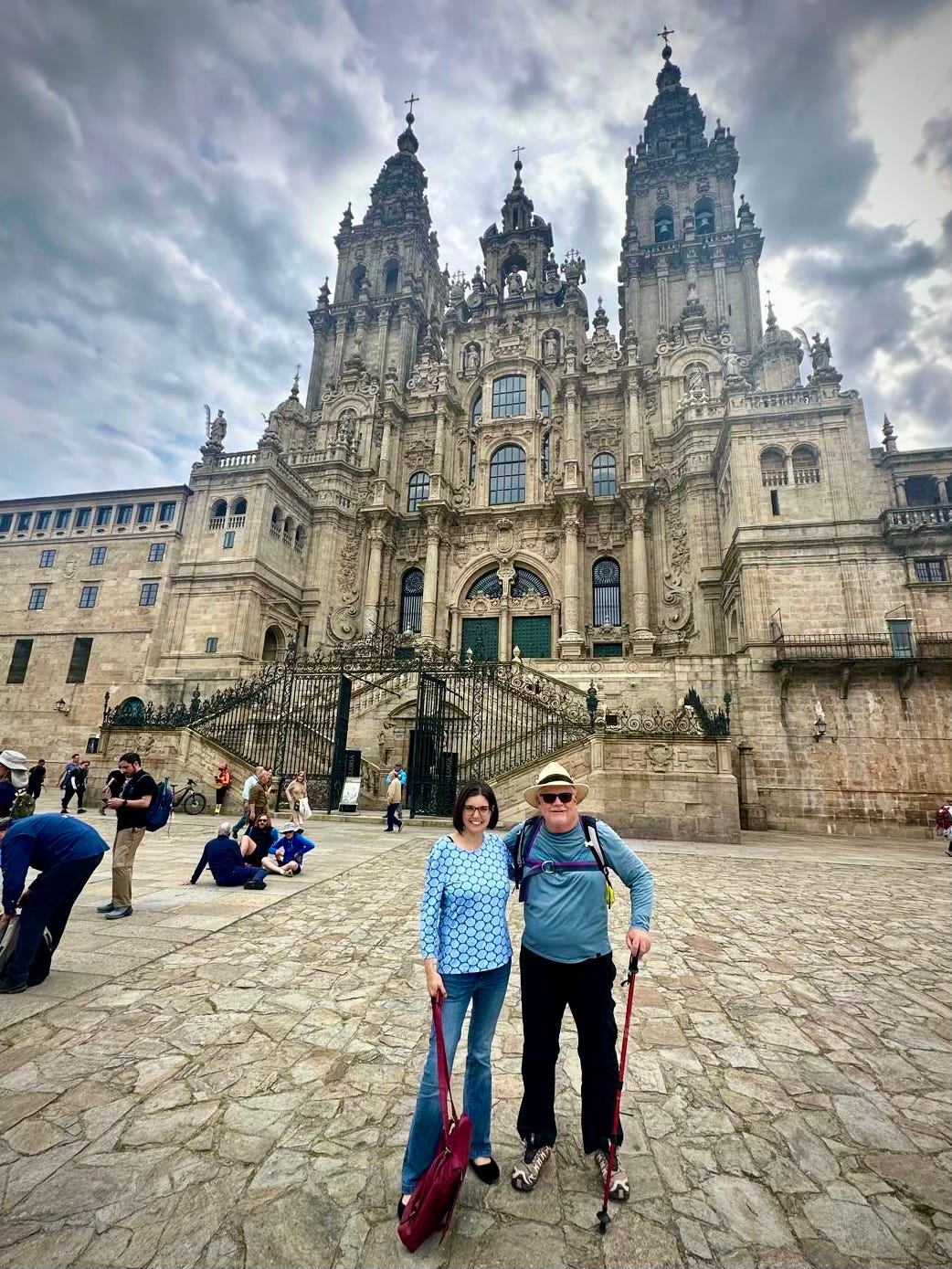
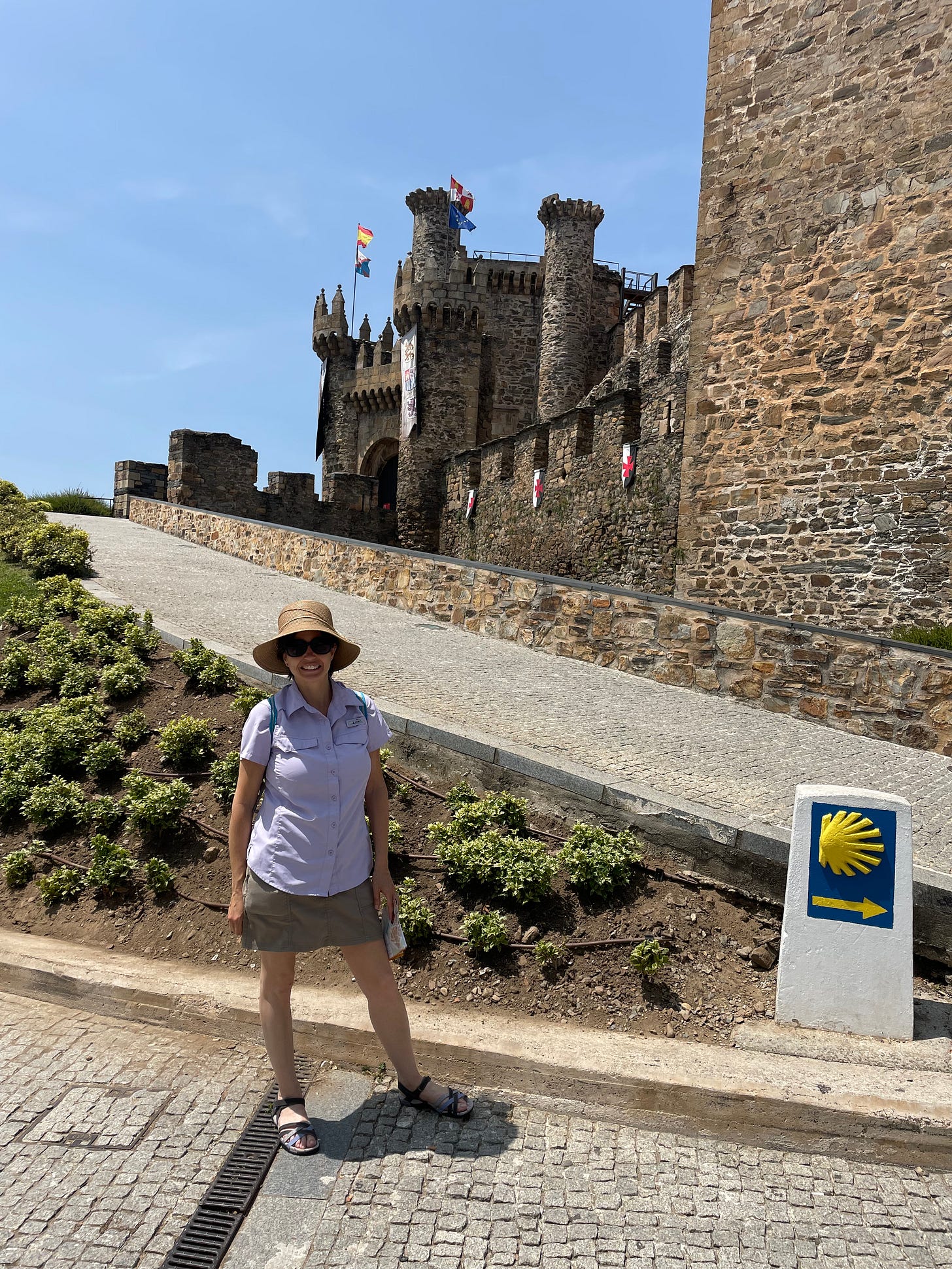
Thanks Rebecca. I love your substack, as I am walking the Camino later this year with some friends and family. Two of us are vegetarian. What are our options? Or do you know what people carry with them to compensate?
Great tip about googling for images when you don’t know what the words mean. And congratulations to Tim! 🥳